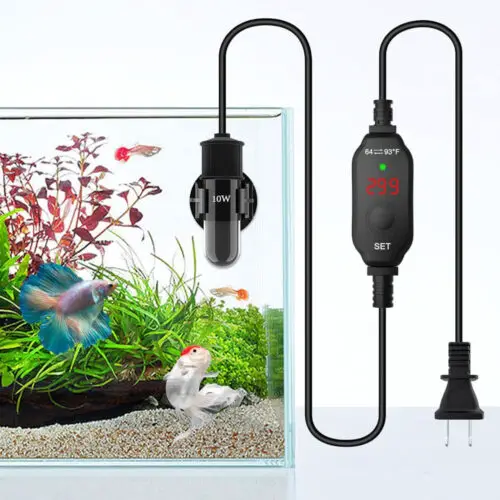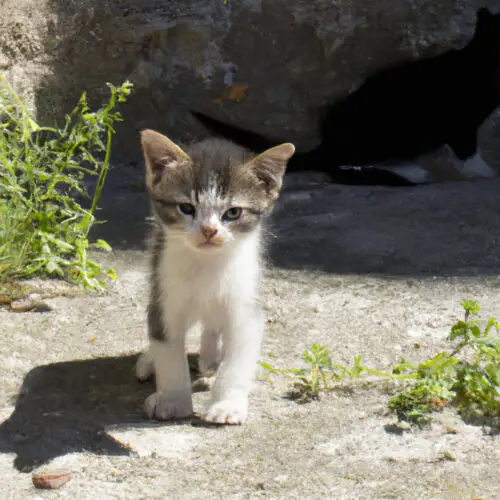Anubias is a genus of aquatic plants that are popular among aquarium enthusiasts. These plants are known for their attractive appearance, low maintenance requirements, and ability to thrive in a variety of water conditions. In this article, we will explore the different species of Anubias, their care requirements, propagation methods, and common issues that may arise when keeping them in an aquarium.
Species of Anubias
The Anubias genus includes several species of aquatic plants, each with its own unique characteristics. Some of the most popular species among aquarists include:
Anubias Barteri
Anubias barteri is one of the most commonly found species of Anubias. It is native to West Africa, where it typically grows in the shaded areas near rivers and streams. This species has broad, dark green leaves that can grow up to 12 inches in length. Anubias barteri is a slow-growing plant that can be grown both submerged and partially submerged.
Anubias Nana
Anubias nana is another popular species among aquarium enthusiasts. It is native to West Africa and has small, round leaves that can grow up to 2 inches in length. Anubias nana is a versatile plant that can be grown attached to rocks or driftwood, or planted in the substrate. It is known for its ability to tolerate a wide range of lighting conditions.
Anubias Congensis
Anubias congensis is a lesser-known species of Anubias that is native to the Democratic Republic of Congo. It has long, narrow leaves that can grow up to 12 inches in length. This species is best suited for larger aquariums, as it tends to grow taller and wider than other Anubias species.
Anubias Afzelii
Anubias afzelii is a tall-growing species of Anubias that is native to West Africa. It has long, lanceolate leaves that can grow up to 15 inches in length. Anubias afzelii is a good choice for aquariums with larger fish, as its leaves are more robust and less likely to be damaged.
Care Requirements
Anubias plants are known for their relatively low maintenance requirements, making them a popular choice for beginner aquarists. Here are some key care requirements to consider when keeping Anubias in your aquarium:
Lighting
Anubias plants can tolerate a wide range of lighting conditions, making them suitable for both low-light and high-light aquariums. However, it is important to strike a balance to ensure their optimal growth. In low-light conditions, Anubias plants may grow slower and have longer internodes, while in high-light conditions, they may be prone to algae growth.
Aim for a lighting intensity of around 2 to 3 watts per gallon for low-light conditions and 4 to 5 watts per gallon for high-light conditions. If using fluorescent bulbs, choose bulbs with a color temperature of around 6500K to provide a natural-looking light spectrum.
Water Parameters
Anubias plants are adaptable to a wide range of water parameters, but they generally prefer slightly acidic to neutral water conditions. Aim for a pH range of 6.5 to 7.5 and a water temperature between 72-82°F (22-28°C).
It is important to note that Anubias plants do not tolerate changes in water parameters well. Sudden changes can cause stress and lead to yellowing or browning of the leaves. To prevent this, maintain stable water conditions and avoid drastic fluctuations in temperature, pH, and hardness.
Substrate and Anchorage
Anubias plants can be grown both planted in the substrate or attached to rocks or driftwood. When planted in the substrate, use a nutrient-rich substrate or add root tabs to provide essential nutrients for the plants. Anubias plants have a rhizome, which means the roots and stems grow horizontally rather than vertically. It is important to avoid burying the rhizome in the substrate, as this can lead to the rotting of the plant. Instead, anchor the plant by attaching it to rocks or driftwood using thread, fishing line, or glue.
Water Flow
Anubias plants prefer moderate water flow in the aquarium. Gentle water movement helps in distributing nutrients and oxygen to the plants without causing excessive stress or damage to the leaves. To achieve this, use a filter that provides gentle water flow or position the plants in areas of the aquarium with moderate water current.
Fertilization
Anubias plants are not heavy feeders and can obtain most of the nutrients they need from the water and substrate. However, supplementing with a liquid fertilizer specifically formulated for aquarium plants can help promote healthy growth and enhance the coloration of the leaves. Choose a fertilizer that provides essential macronutrients (nitrogen, phosphorus, and potassium) as well as micronutrients (iron, manganese, and trace elements).
It is important to note that Anubias plants are sensitive to high levels of nutrients, especially nitrate and phosphate. Avoid over-fertilization, as this can lead to algae problems and stunted growth. Monitor nutrient levels using test kits and adjust fertilization accordingly.
Coexistence with Fish and Invertebrates
Anubias plants are generally compatible with fish and invertebrates. However, some fish species, particularly herbivorous species, may nip at the leaves or uproot the plants. It is important to choose tank mates that are not known to be plant eaters and provide appropriate hiding places or shelter for the plants.
Propagation
Anubias plants can be propagated through various methods, including division, rhizome cuttings, and tissue culture. Here are some common propagation methods for Anubias:
Division
Division is the most common and straightforward method of propagating Anubias plants. To divide Anubias, first, remove the plant from the substrate or attachment and carefully separate the rhizome into individual sections. Each section should have healthy leaves and roots attached. Plant the divided sections in the substrate or attach them to rocks or driftwood as desired.
Rhizome Cuttings
Rhizome cuttings involve cutting a portion of the rhizome and planting it separately to encourage new growth. To do this, carefully cut a section of the rhizome with at least one healthy leaf and a few roots using a sharp, clean knife or scissors. Plant the cutting in the substrate or attach it to rocks or driftwood. The cuttings will develop new roots and leaves over time.
Tissue Culture
Tissue culture is a method of propagating plants in a controlled laboratory environment. Anubias tissue culture plants are typically sold in small containers with a gel substance holding the plant. To propagate tissue culture Anubias, remove the plant from the container and carefully rinse off the gel under running water. Plant the tissue culture plant in the substrate or attach it to rocks or driftwood.
Tissue culture plants are known to have a higher success rate of establishing compared to plants propagated through division or rhizome cuttings. They are also less likely to introduce pests or diseases into the aquarium.
Common Issues
While Anubias plants are generally easy to care for, there are a few common issues that may arise when keeping them in an aquarium. Here are some potential issues and their solutions:
Yellowing or Browning Leaves
Yellowing or browning of Anubias leaves can be caused by various factors, including nutrient deficiencies, poor water quality, or inadequate lighting. To address this issue, assess the water parameters and adjust them as needed. Ensure the plants are receiving adequate light, and consider supplementing with a liquid fertilizer if nutrient deficiencies are suspected.
Algae Growth
Anubias plants are relatively resistant to algae growth, but under certain conditions, algae can still become a problem. Algae growth is often caused by an excess of nutrients or prolonged exposure to intense light. To address this issue, reduce the lighting intensity or duration, and consider supplementing with carbon dioxide (CO2) to inhibit algae growth. Regular water changes, the use of an algae scraper or brush, and the introduction of algae-eating fish or invertebrates can also help keep algae growth in check.
Leaf Melt
Leaf melt, the sudden decay of Anubias leaves, can occur due to sudden changes in water parameters, transplant shock, or physical damage. To prevent leaf melt, maintain stable water conditions, avoid excessive handling or moving of the plants, and provide appropriate lighting and nutrient levels.
If leaf melt occurs, remove the decaying leaves to prevent the spread of disease or infection. Healthy leaves will grow back once the plants have acclimated to their new environment.
Pictures
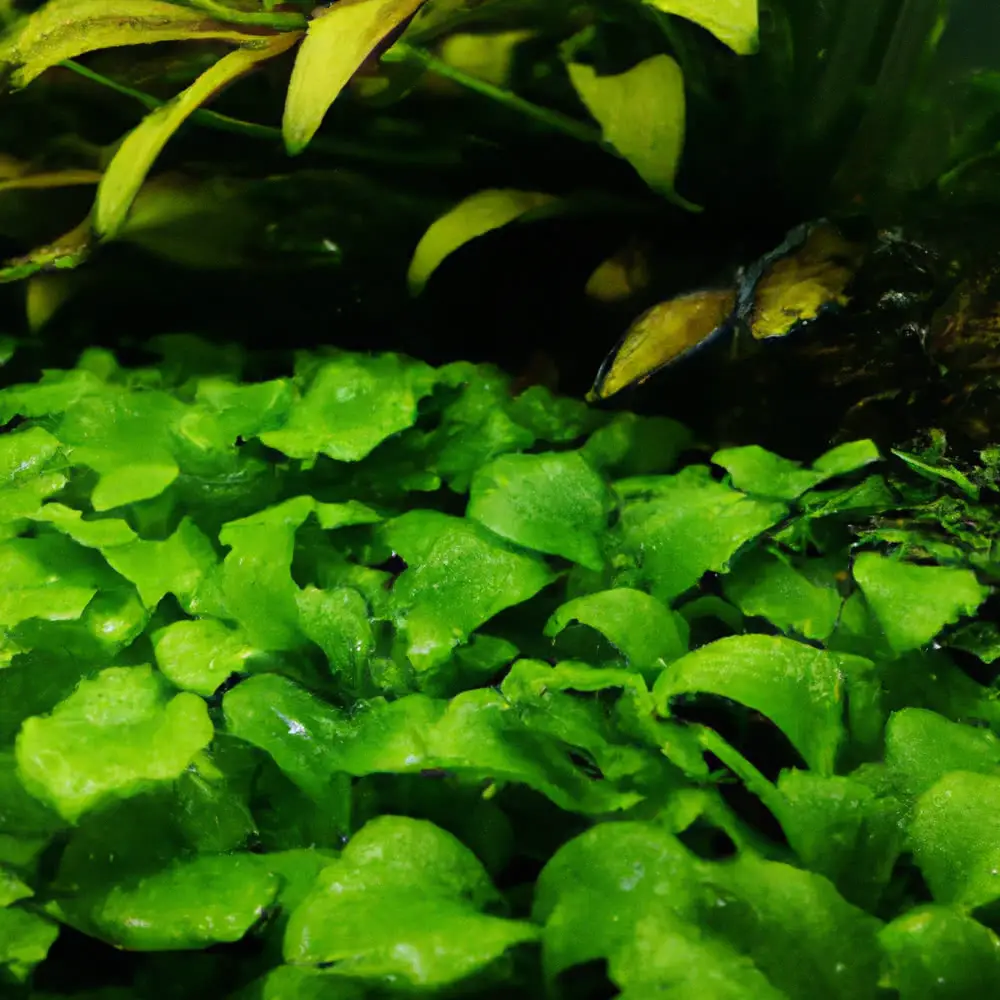
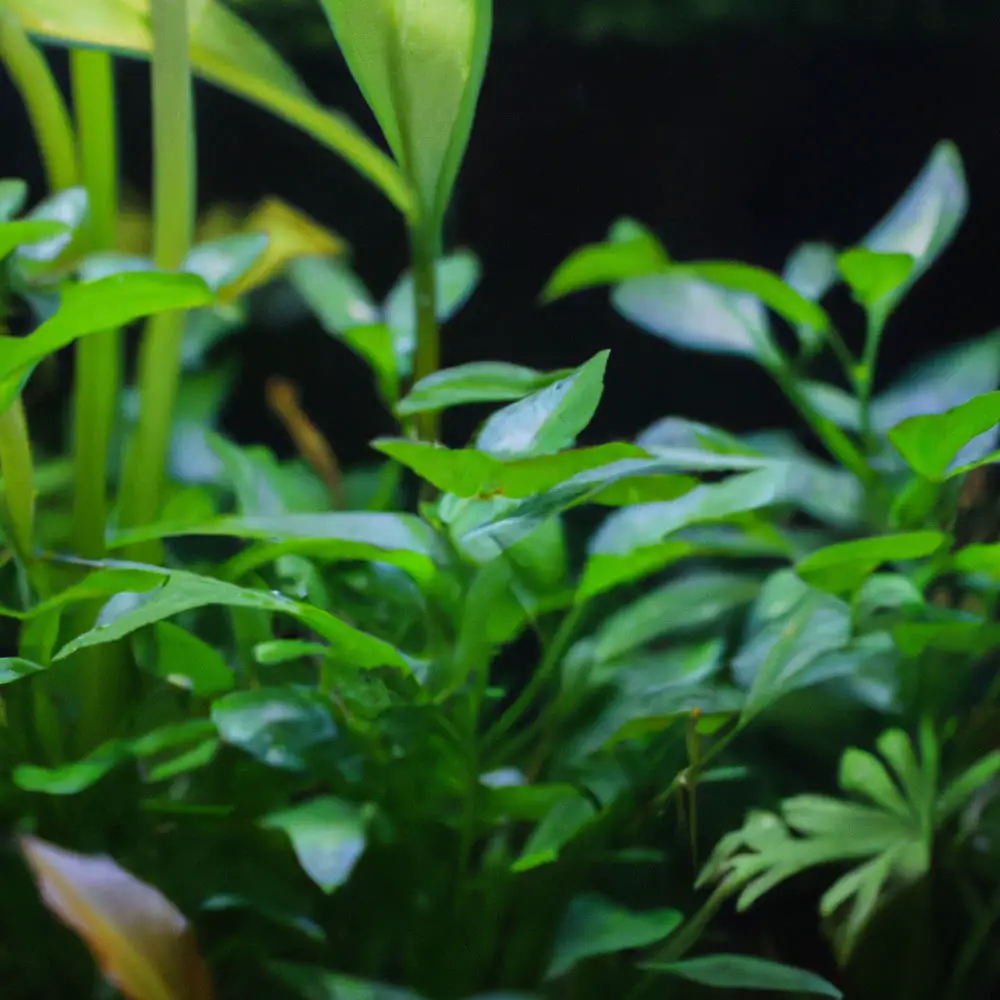
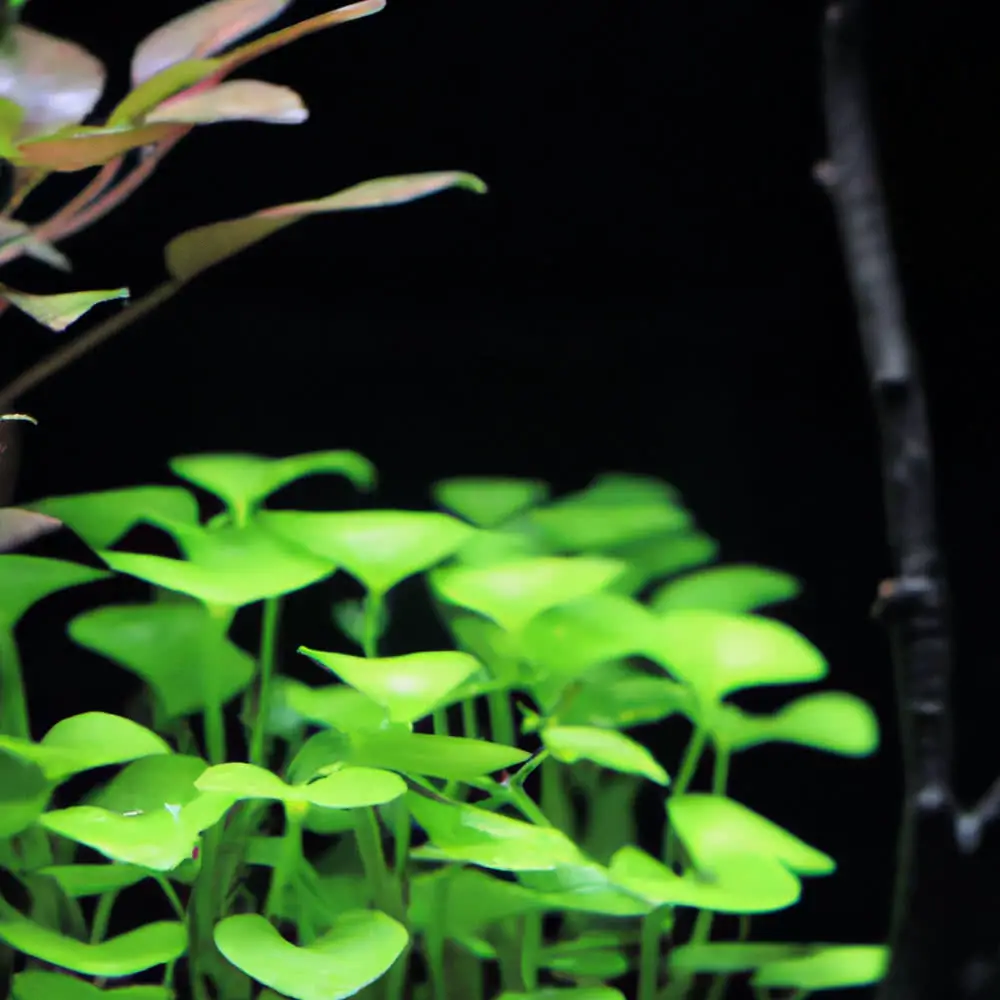
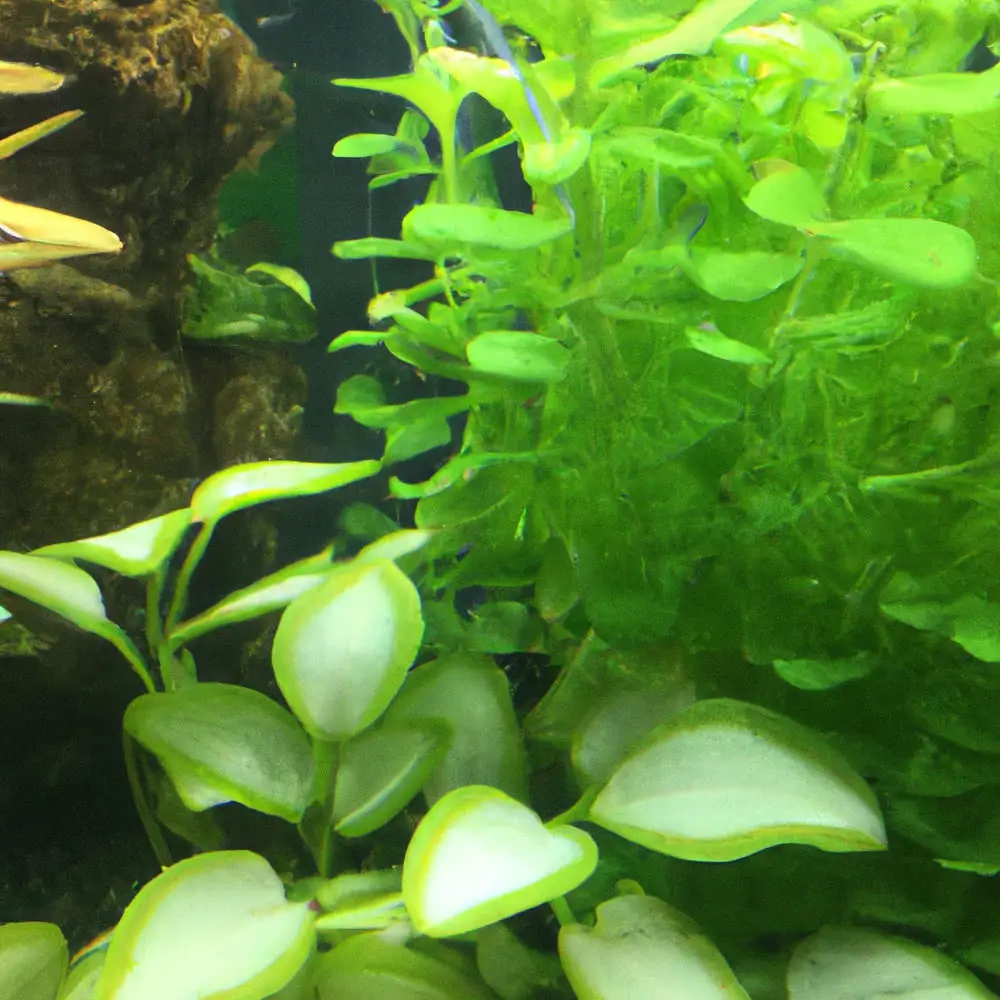
F.A.Q.
What is Anubias aquarium plant?
Anubias is a genus of aquatic plants that are commonly used in aquariums. They belong to the family Araceae and are known for their attractive, broad, and dark green leaves.
How do I care for Anubias plants in my aquarium?
Anubias plants are relatively low-maintenance. It is best to keep them in a shady area of the aquarium with moderate lighting. They can be attached to rocks or driftwood using fishing line or special plant glue. Avoid burying their rhizomes in the substrate to prevent rot.
What are the benefits of having Anubias plants in my aquarium?
Anubias plants provide numerous benefits to your aquarium. They add aesthetic appeal, provide hiding places for fish and fry, help oxygenate the water, and absorb excess nutrients which can prevent algae growth.
Can Anubias plants survive in low-light conditions?
Yes, Anubias plants can thrive in low-light conditions. In fact, they prefer moderate to low lighting. High-intensity lighting may cause their leaves to turn brown or develop algae growth.
What is the ideal water temperature for Anubias plants?
Anubias plants can tolerate a wide range of water temperatures, but they thrive in temperatures between 72°F and 82°F (22°C to 28°C).
How often should I fertilize Anubias plants?
Anubias plants are not heavy feeders and do not require frequent fertilization. They can obtain most of their nutrients from the water and fish waste. However, you can supplement their growth with a liquid aquarium fertilizer once every two to four weeks.
Can Anubias plants be grown in a CO2-injected aquarium?
Yes, Anubias plants can be grown successfully in a CO2-injected aquarium. However, they have a slow growth rate and can thrive in low CO2 concentrations found in most aquariums. CO2 injection is generally not necessary for their growth.
Can Anubias plants be grown in a fishless aquarium?
Anubias plants can be grown in a fishless aquarium as long as the necessary nutrients are provided. Fish waste and decomposing organic matter are natural sources of nutrients for these plants, so you will need to supplement the lacking nutrients with fertilizers or liquid plant food.
How do I clean Anubias plants?
Cleaning Anubias plants is relatively simple. You can gently wipe their leaves with a soft cloth or sponge to remove any algae or debris. Avoid using any chemicals or abrasive materials to prevent damage to the leaves.
Can I propagate Anubias plants?
Yes, Anubias plants can be easily propagated. You can cut their rhizomes into sections, making sure each section has leaves and roots, and then plant them separately. This method allows you to create new plants from a single parent plant.
What type of substrate is best for Anubias plants?
Anubias plants are not overly picky when it comes to substrate. They can be planted in various substrates, such as gravel, sand, or aquarium soil. The most important thing is to ensure that the rhizome is not buried to prevent rot.
Can Anubias plants be kept with other aquarium plants?
Anubias plants can coexist with other aquarium plants as long as their individual care requirements are met. It is important to ensure that Anubias plants are not overshadowed by larger or faster-growing plants as this can hinder their growth.
Do Anubias plants require a filter in the aquarium?
Anubias plants do not require a filter specifically for their growth. However, having a filter in the aquarium helps maintain water quality, removes excess nutrients, and oxygenates the water, which indirectly benefits the plants.
Can Anubias plants be grown in a betta fish tank?
Yes, Anubias plants can be grown in a betta fish tank. The slow growth and broad leaves of Anubias plants provide betta fish with resting places and shelter. Just make sure that the leaves do not obstruct the betta’s swimming space.
Can Anubias plants be grown in brackish water?
No, Anubias plants are best suited for freshwater aquariums. They do not tolerate high salinity levels and will not thrive in brackish water.
Can Anubias plants be grown in a pond?
Anubias plants can be grown in a pond as long as the water is within their preferred temperature range and provides the necessary nutrients. They can be planted along the edges of the pond or in shallow areas with partial shade.
Are Anubias plants suitable for aquascaping?
Yes, Anubias plants are commonly used in aquascaping due to their attractive appearance and ease of care. They can be positioned as focal points or used to create a dense green background in an aquarium.
Can Anubias plants be grown without a substrate?
Yes, Anubias plants can be grown without a traditional substrate. They can be attached to rocks, driftwood, or other aquarium decorations using fishing line or plant glue. The rhizome should be secured in place while the roots can grow freely in the water.
Can Anubias plants survive in an outdoor pond during winter?
Anubias plants are not frost tolerant and do not survive in freezing temperatures. If you have Anubias plants in an outdoor pond, you should consider moving them indoors or providing adequate protection during the winter.
How fast do Anubias plants grow?
Anubias plants have a relatively slow growth rate compared to many other aquarium plants. Under optimal conditions, they can grow around 1-2 leaves every 4-6 weeks.
Can Anubias plants be used in a shrimp tank?
Yes, Anubias plants can be used in a shrimp tank. They provide cover and hiding places for shrimp, enhance the overall aesthetics of the tank, and help maintain water quality by absorbing excess nutrients.
Are Anubias plants suitable for beginners?
Yes, Anubias plants are suitable for beginners in the aquarium hobby. They are generally hardy, have low care requirements, and can tolerate a wide range of water conditions.
Can Anubias plants survive in areas with hard water?
Yes, Anubias plants can survive in areas with hard water. However, in such areas, you may need to monitor their leaves for mineral deposits and clean them periodically to prevent buildup.
Can Anubias plants be grown in a paludarium?
Anubias plants can be grown in a paludarium, which is a type of enclosure that combines an aquatic and terrestrial habitat. They can be planted in the aquatic portion of the paludarium and also survive when partially emerged in the terrestrial section.
Do Anubias plants produce flowers?
Yes, Anubias plants can produce small white or yellow flowers if they are provided with the right conditions. However, flowering is relatively rare in aquarium settings compared to when they are grown in their natural environment.
Are Anubias plants safe for herbivorous fish?
Yes, Anubias plants are generally safe for herbivorous fish. Herbivorous fish rarely consume them due to their tough and leathery leaves. However, some fish may nip at the leaves out of curiosity or stress.
Can Anubias plants be grown emersed in a terrarium?
Anubias plants can be grown emersed in a terrarium as long as the humidity levels and lighting conditions are suitable. They can be potted with a moist substrate or placed on top of a humidity tray to promote healthy growth.
Can Anubias plants tolerate water movement in the aquarium?
Anubias plants can tolerate gentle water movement in the aquarium. However, excessive water flow or direct strong currents may cause their leaves to tear or become damaged.
Can Anubias plants be kept with goldfish?
Yes, Anubias plants can be kept with goldfish. Goldfish are generally not known for eating Anubias plants, and the plants can provide them with additional cover and shade in the aquarium.
How do I prevent algae growth on Anubias plant leaves?
To prevent algae growth on Anubias plant leaves, it is important to maintain proper water parameters and lighting. Avoid excessive lighting and nutrient levels in the water, and conduct regular water changes to minimize the buildup of nutrients that promote algae growth.
Can Anubias plants be grown in a low-tech planted tank?
Yes, Anubias plants can be grown successfully in a low-tech planted tank. They don’t have high demands for lighting or CO2 supplementation, making them ideal for low-tech setups.
Can Anubias plants be grown in a vivarium?
Anubias plants can be grown in a vivarium with amphibians or reptiles. They can be planted in the amphibian or reptile water area and can tolerate the increased humidity levels in the vivarium.
Are Anubias plants compatible with cichlids?
Yes, Anubias plants are generally compatible with cichlids. While some cichlids may nip at the leaves, many species do not actively eat them. Anubias plants can provide additional cover and natural aesthetics to cichlid tanks.
Can Anubias plants be grown in a low-nutrient tank?
Yes, Anubias plants can be grown in a low-nutrient tank. They have slow growth and can adapt to low nutrient levels by absorbing nutrients from the water and substrate.
Can Anubias plants be grown in brackish water mollusk tanks?
Anubias plants are not recommended for brackish water mollusk tanks. The higher salinity levels in these tanks can result in adverse effects on the plants’ growth and health.
How do I attach Anubias plants to rocks or driftwood?
To attach Anubias plants to rocks or driftwood, you can use fishing line or plant glue. Carefully tie the plant’s rhizome to the rock or driftwood, ensuring that it is securely fastened without burying it in the substrate.
Are Anubias plants suitable for fish fry tanks?
Yes, Anubias plants are suitable for fish fry tanks. Their broad leaves provide shelter and surfaces for microorganisms that fry can graze on. The plants also help maintain water quality and provide a natural environment for the fry.
Can I use Anubias plants in a low-light, low-tech shrimp tank?
Yes, Anubias plants can thrive in a low-light, low-tech shrimp tank. They are well-suited to such setups and provide excellent cover for shrimp.
Do Anubias plants require specific water flow in the aquarium?
Anubias plants do not require specific water flow in the aquarium. However, gentle water movement can help prevent debris from settling on their leaves and aid in nutrient distribution.
Can Anubias plants grow without CO2 supplementation?
Yes, Anubias plants can grow well without CO2 supplementation. They have adapted to low CO2 levels found in natural environments and can obtain enough carbon dioxide from the surrounding water and air.
Are Anubias plants prone to diseases or pests?
Anubias plants are generally hardy and not highly susceptible to diseases or pests. However, they can occasionally be affected by common aquarium pests like snails or algae. Regular observation and maintenance will help prevent major issues.
Can I keep Anubias plants in a small-sized aquarium?
Yes, Anubias plants can be kept in small-sized aquariums as they have a slow growth rate and do not require excessive space. They can even be grown in nano tanks or small bowls with the proper care.
Are Anubias plants suitable for use in paludariums with amphibians?
Yes, Anubias plants are suitable for use in paludariums with amphibians. They can be placed in the aquatic portion of the paludarium and can handle the increased humidity levels.
Can Anubias plants be used to create a carpet in an aquarium?
No, Anubias plants are not suitable for creating a carpet effect in an aquarium. Their slow growth rate and large leaves make them unsuitable for carpeting. Other plants, like dwarf hairgrass or carpeting moss, are better suited for that purpose.
Can I keep Anubias plants with livebearers?
Yes, Anubias plants can be kept with livebearers such as guppies, mollies, or platies. Livebearers generally leave the plants alone and can benefit from the cover and natural aesthetics provided by Anubias plants.
Can Anubias plants be grown without any fertilizers?
Yes, Anubias plants can be grown without additional fertilizers as they can absorb nutrients from the water column and fish waste. However, adding liquid fertilizers or root tabs can promote healthier growth and enhance their overall appearance.
Conclusion
Anubias plants are a versatile and attractive addition to any aquarium. With their low maintenance requirements and ability to thrive in a variety of water conditions, they are a popular choice among beginner and experienced aquarists alike. By providing the proper care, lighting, and water parameters, Anubias plants can flourish and enhance the beauty of your aquarium. Whether you choose Anubias barteri, Anubias nana, or any other species within the Anubias genus, these plants are sure to add a touch of natural beauty to your aquatic landscape.


